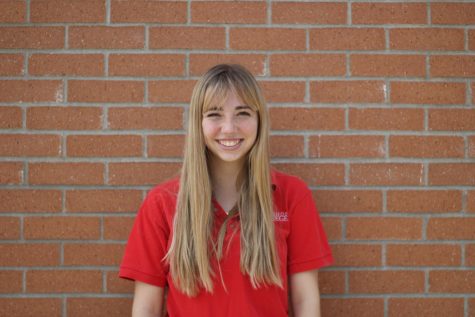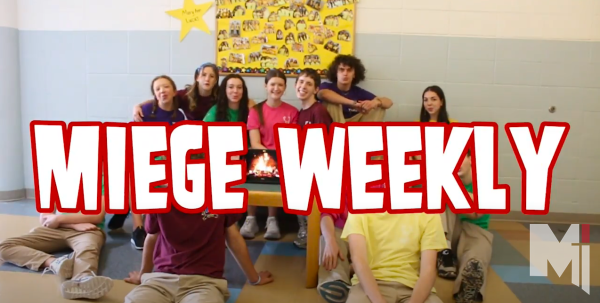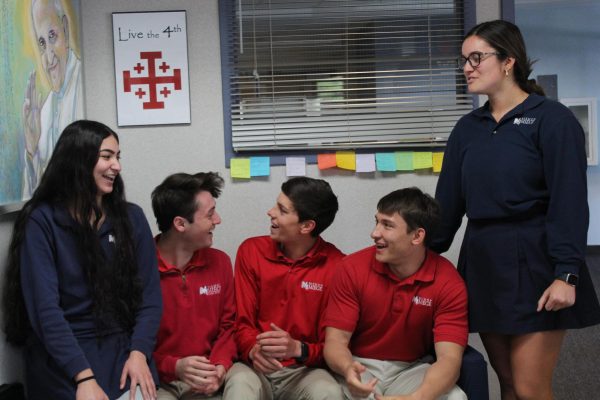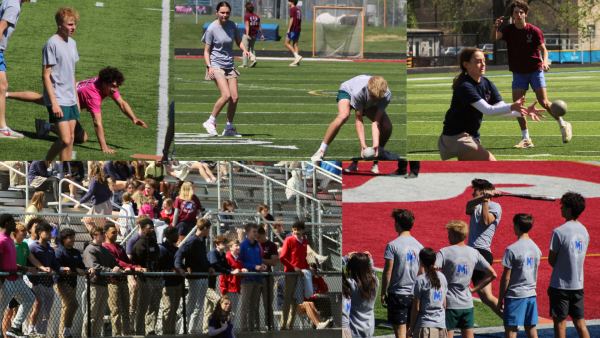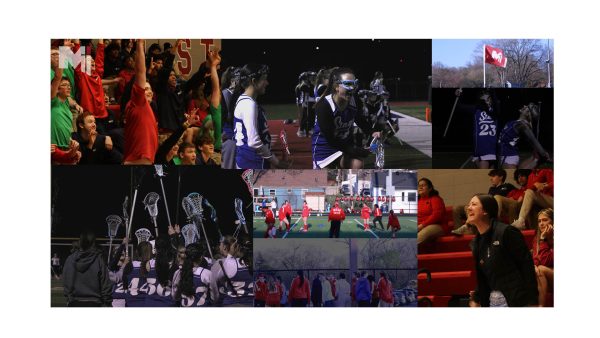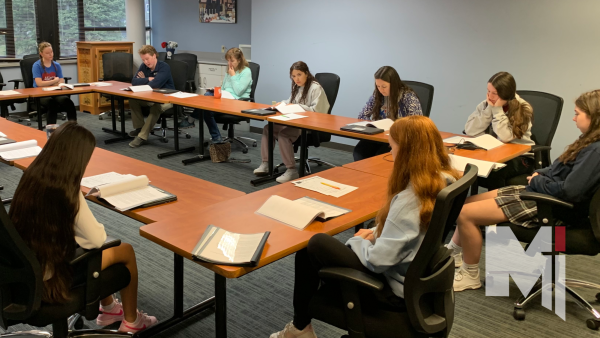Academic Blues: Students face burnout returning to second semester workload
March 3, 2022
The change in students’ mental health after Christmas is clear, according to school counselor Elaine Schmidtberger, especially in the months of January and February.
“Third quarter I notice is always the worst grades because [students] are getting ready for spring break, they got off Christmas break and they are just kind of in the ‘bleh,’” Schmidtberger said.
Common symptoms of burnout among students are lack of interest in classes, increased loneliness, avoidance of extracurriculars and a decline in academic performance, according to Miege students in a recent survey.
According to the optional survey of 162 students, 65%, said they struggle with the effects of burnout in and out of the classroom.
Senior Pearl Romine, who plays volleyball outside of school, said it has been a challenge this year especially to push through and want to go to practice. Romine descriebed the feeling of being burnout as when someone is stressed out to the point where they cannot continue doing things they would do regularly.
“I feel like after COVID-19 and being in lockdown it’s more difficult to get yourself back in the mindset of wanting to go out and do things,” Romine said.
For Romine, her day-to-day struggle with burnout begins before the school day even starts.

“It’s really hard for me to get up in the morning,” Romine said. “Every morning before school, I debate telling
my mom that I’m sick because I just don’t want to do the work. I don’t want to put in the effort, but I know that I have to, especially with going to college next year … it’s just hard.”
A nationwide survey of teens and adults conducted online by the American Psychological Association in 2014 revealed that teens’ stress levels during the school year topped adults’ average stress level, with teens having an average of 5.8 on a 10 scale vs. 5.1 on a 10 scale for adults.
Approximately 31% of teens reported feeling overwhelmed, 30% reported feeling depressed and more than a third, or 36%, reported feeling tired.
These numbers have only gotten worse in recent years, especially with the COVID-19 pandemic.
A survey conducted by Michigan Health of 977 teenagers in 2021 reported one in three girls and one in five boys experienced new or worsening anxiety. Not only were teens experiencing anxiety, but sleep issues and aggressive behaviors as well.
Teenagers are expected to return to school with 100% effort; however, for some students, the feeling of being burnt out stifles their work ethic.
According to Romine and freshman Helen Miroslaw, outside factors play a major role in causing students to feel burnout.
“Because I remember s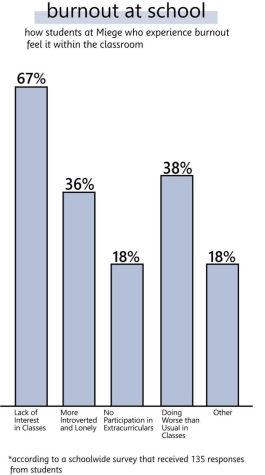 chool without COVID-19, it definitely feels a little different,” Miroslaw said. “It feels a little more isolated, and I’m not as close with everybody as I could be.”
chool without COVID-19, it definitely feels a little different,” Miroslaw said. “It feels a little more isolated, and I’m not as close with everybody as I could be.”
While COVID-19 still majorly affects students’ mindsets today, there are more subtle outside influences to mental health that have been present since before the pandemic.
“I think pressure from your parents, school, and people around you just like when you get really stressed and everyone is telling you to do something, it makes you tired of doing it eventually,” Romine said.
Out of 162 students, 46% of Miege students attributed their lack of mot
ivation to an overabundance of school work and academic pressure, and 22% of students struggle with mental challenges outside of the classroom as well.
In contrast to previous school years, this year is the first “normal” school year without an alternative schedule. Whether it was online, hybrid or no school at all, students had a flexible schedule allocating more free time for students during the day.
Teachers have noticed a change in their students as well, and some such as math teacher Lori Voss have tried to alter their teaching methods to help students with their mental struggles.
One way Voss helps her students is by giving time in class for students who are falling behind.
“I am a big proponent of mental health as far as making sure everyone is taking care of themselves,” Voss said. “Making sure that you are getting enough sleep is a mental and physical health thing at the same time.”
Following repeated absences due to sickness and injury, Miroslaw was overwhelmed by the amount of course work to make up and struggled to understand assignment details through Google Classroom.
According to Miroslaw, some teachers do not seem to fully understand how burnout works for students in their classrooms.
This begs the question: how can students overcome the burnout they are facing? While 64% of Miege students said they have overcome burnout, 36% of the 138 surveyed said they are still struggling to regain motivation in their lives.
While students overcome their burnout, students such as freshman Elier Perez still suffer from their battle with burnout.

“I definitely think after any burnout that happens with me,” Perez said. “My mental health and mental space is a lot worse than it was before.”
Senior Emily Lynn is an upperclassmen acquainted with burnout. According to Lynn, finding motivation is key to successfully battling burnout. Managing time spent on homework and fun activities can help students keep their lives in control.
“I may not have the motivation to do [homework] sometimes,” Lynn said. “But I recognize that it is important to get it done and try to do it during school.”
With the bursts of cold weather, it is easy to begin feeling stressed which, according to Miroslaw, makes it important to find the little things in day-to-day life.
“Some days I wake up more motivated than others, I’m not sure why,” Miroslaw said. “I think it may be the classes I have that day and what my favorite classes are and who I get to eat lunch with.”



